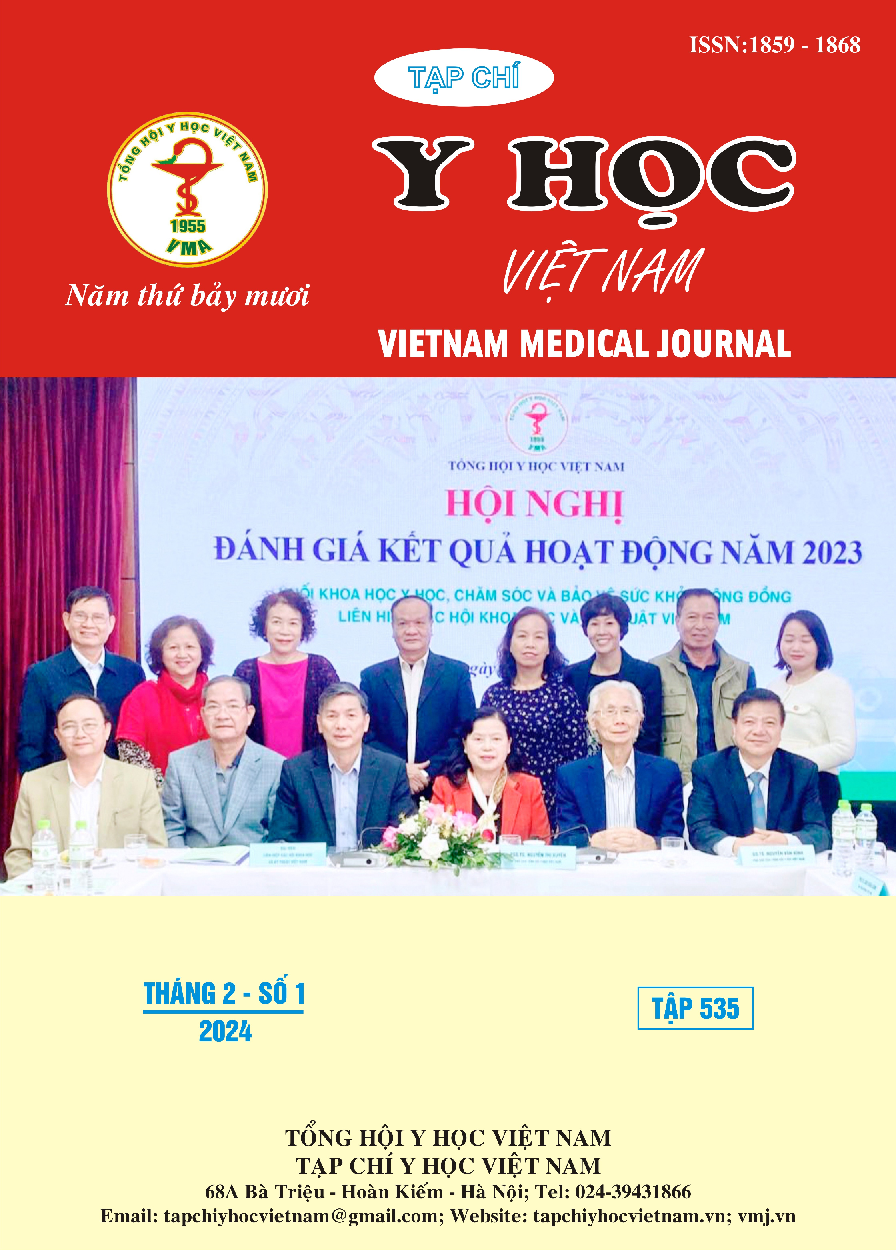STUDY ON CLINICAL CHARACTERISTICS AND ADREHENCE TO TREATMENT OF PEPTIC ULCER DISEASE AT SHING MARK UNIVERSITY HOSPITAL
Main Article Content
Abstract
Background: Peptic ulcer disease (PUD) is a common chronic disease, easily relapsing and with many dangerous complications. According to the World Health Organization, about 5-10% of the world's population has stomach ulcers, in Vietnam, this rate is about 7% of the population, this is the second leading digestive disease causing global health burden. The treatment of PUD is often difficult, in which, the patient's adherence is an important issue determining the success, but often little attention is paid to the process of PUD treatment. Objectives: Survey on clinical characteristics and evaluation of adherence to treatment for peptic ulcer disease at Shing Mark University Hospital. Materials and method: Patients aged 18 years and older who came for outpatient examination and treatment of PUD at Shing Mark University Hospital from October 1, 2022 to May 31, 2023. The study design is cross-sectional with analysis, assessing treatment adherence using the MMAS-8 scale. Results: The average age of the patient was 46.5 ± 14, the majority were female (62.9%). The rate of patients with a previous history of PUD accounted for 63.3%. The main symptom is abdominal pain and dyspepsia (95.1%). The endoscopic lesion location is usually in the pyloric antrum (81.6%). The rate of patients infected with H. pylori is 39.2%. The rate of patients with treatment adherence was 84.1%. Groups of patients with a history of related diseases, male gender and H. pylori infection have low treatment adherence rates. Conclusion: The treating physician should consult carefully for patients in the group with low adherence rate. It is necessary to strengthen communication work to prevent PUD.
Article Details
References
2. Lê Thị Xuân Thảo (2016), "Tỷ lệ tuân thủ điều trị và yếu tố liên quan trong điều trị tiệt trừ Helicobacter pylori ở bệnh nhân viêm loét dạ dày tá tràng tại bệnh viện Đại học Y Dược TP. Hồ Chí Minh", Luận văn Thạc sĩ Dịch vụ Y tế. Đại học Y Dược Thành Phố Hồ Chí Minh.
3. Nguyen Thang (2019), "The Vietnamese Version of the Brief Illness Perception Questionnaire and the Beliefs about Medicines Questionnaire: Translation and Cross-cultural Adaptation", Tropical Medicine & International Health. 24 (12), pp. 1465 – 1474, DOI: 10.1111/tmi.13312
4. Đặng Ngọc Quý Huệ (2018), "Nghiên cứu tỷ lệ kháng Clarithromycin, Levofloxacin của Helicobacter pylori bằng Epsilometer và hiệu quả của phác đồ EBMT ở bệnh nhân viêm dạ dày mạn", Luận án Tiến sĩ Y Học, Trường Đại học Y Dược Huế.
5. Nguyễn Quang Chung, Tạ Long và Trịnh Tuấn Dũng (2007), "Hình ảnh nội soi, mô bệnh học của viêm dạ dày mạn có nhiễm Helicobacter pylori", Tạp chí Khoa học Tiêu hoá Việt Nam. 2(7), tr. 389-394.
6. Kalkan I. H, F Sapmaz and S Guliter (2016), "Severe gastritis decreases success rate of Helicobacter pylori eradication", Wien Klin Wochenschr. 128(9), pp. 329-334, DOI: 10.1007/s00508-015-0896-2
7. Shakya S. S., Bhadari M. and Thapa S. R. (2016), "Medication adherence pattern and factors affecting adherence in Helicobacter pylori eradication therapy", Kathmandu University Medical Journal. 14 (53), pp. 58 – 64, PMID: 27892443
8. Nimish B Vakil MD (2022), "Peptic ulcer disease: Epidemiology, etiology, and pathogenesis", Uptodate Mar 08, 2022. https://www.uptodate.com/contents/peptic-ulcer-disease-epidemiology-etiology-and-pathogenesis


